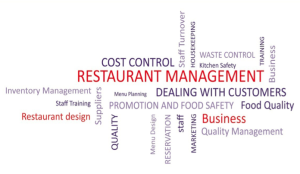The food and beverage industry is one of the confronting businesses when it comes to amending their inventory control. The arduous intricacies involved in controlling an array of perishable components and meeting customer service targets means that powerful inventory management software (IMS) is crucial.

The right restaurant inventory management software (IMS) is key to promoting better efficiency, profitability, productivity for businesses. Food and beverage manufacturers particularly can limit or eliminate unnecessary losses under inventory management. It can also aid in faster and efficient growth that is adjusted to assisting the business scale.
Traceability – The Significance Of Visibility Of The Supply Chain
While handling short shelf-life products, inventory managers should easily trace, track and hold accountability for each inventory item at any time.
Complete visibility into the migration of each inventory item through the supply chain builds a ripple effect that develops greater efficiency along with every node – starting from demand forecasting, purchasing, manufacturing, distribution, and sales. By enabling to locate each inventory item in real-time leads to a reduction in the loss due to any misplaces, mismanaged and mishandled inventory. Inventory can be kept at optimum levels by protecting the business against the risk of under and overstock issues. These issues usually include tied-up cash flow, off-target forecasting & purchasing and missed sales due to stock-outs. A new-age supply chain management system can do away with all the inventory related issues.
Highly Customizability of an Inventory Management System
The capability to modify and refine critical components of an IMS to align and integrate with the business’s supply chain is beneficial in many ways.
With the right inventory management software at their disposal, managers are better able to consolidate their data with their suppliers. This assures that lead times are preserved to a minimum and the communication lines are clear, open and free of misconception. This results in a marked decline in over and under supply of inventory.
Efficiency + Automation = Boosted Profitability
A smart IMS can influence the power of automation to improve the efficiency of production, procurement, distribution, and sales. With no capability to trace, track, and account for inventory from source to sale, managers have no accurate and dependable way to enforce inventory control protocol set by a particular restaurateur.
In particular, loss due to wastage is to be kept within the lowest margin or eliminated as a whole by setting up an inventory flow from purchasing to manufacturing to distribution & final sale in such a way that goods which are more susceptible to wastage are used efficiently.
Product Recall Made Easy
One final advantage for food and beverage setup owners is – the ability to alleviate the probability of a product recall, and in the situation that recall becomes necessary, the capability to carry out the recall as efficiently as possible. The ability to trace, track and account for an inventory in real-time allows businesses the convenience of containing the threat quickly; while planning and acting strategically.
Scale For Growth through Inventory Management Systems
Greater productivity and operational efficiency leads to successful business and growth. Static or fixed IMS can impact a business’s ability to transit to a higher level of profitability. The most vital component of a restaurant inventory management system is the ability to evolve and adapt ahead of the business requirements and needs as it scales.
In the food and beverage industry where every second count and every inventory item has an expiry date, the margin for error when enforcing a powerful inventory management solution is merely tenuous.


